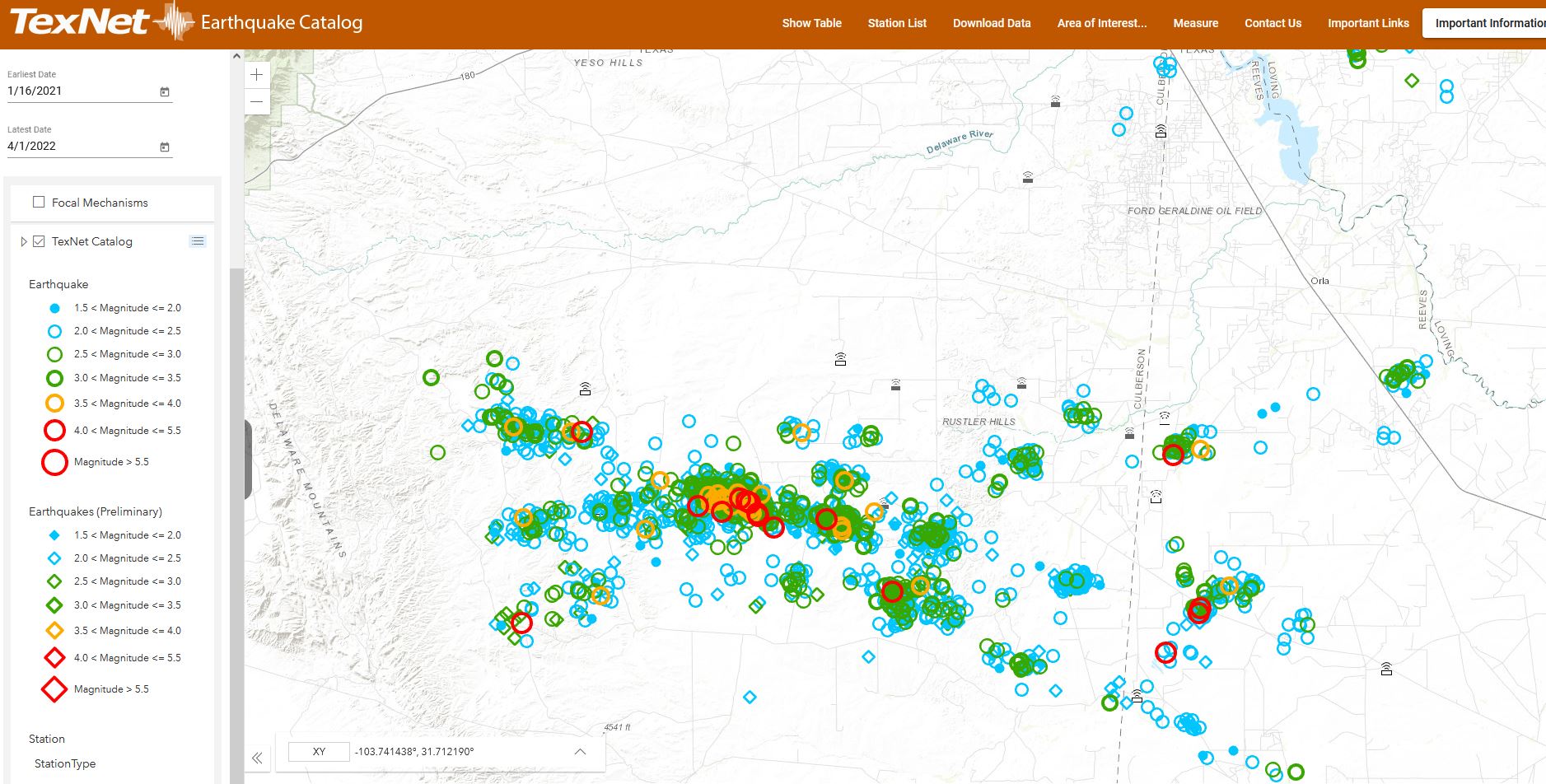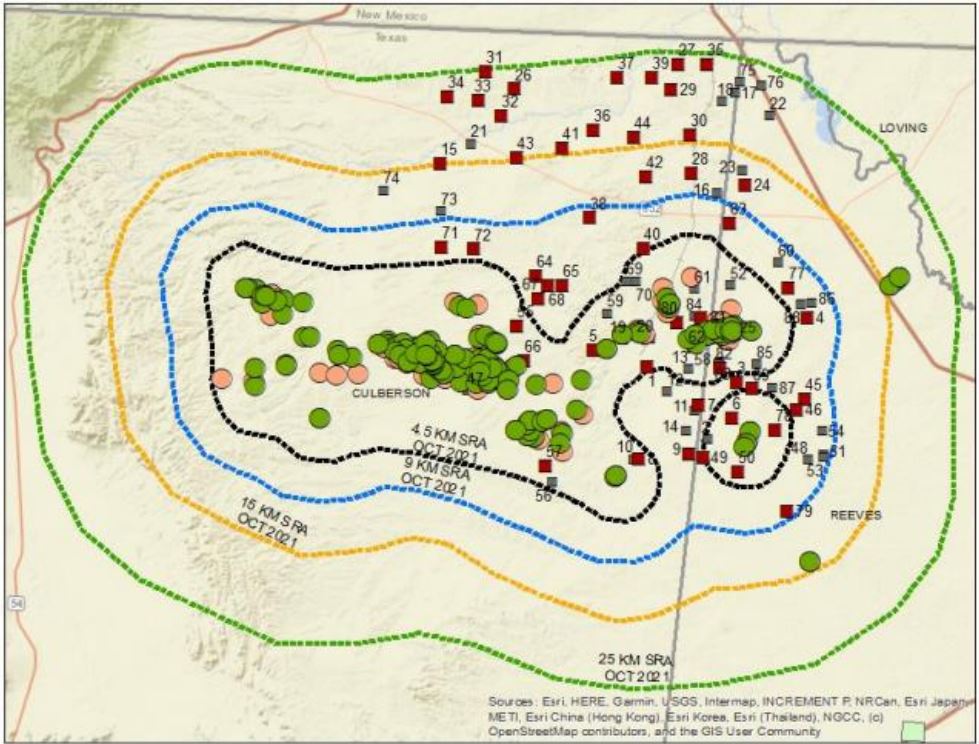I first wrote about earthquakes caused by injection wells in 2015. After earthquake events large enough to be felt in the Dallas-Fort Worth area, the Legislature funded a $4.4 million study by UT’s Bureau of Economic Geology to monitor quake activity in areas where disposal wells were active. Because of quakes in Oklahoma, the Oklahoma Corporation Commission had already begun studying the connection. Up until that time the Railroad Commissioners refused to recognize a connection between quakes and oil and gas production or injection. At a RRC hearing asking XTO to show cause why its activity in Parker County were not being caused by its injection wells, XTO argued that the quakes were natural phenomena not cause by their injection activities despite a study from Southern Methodist University making that connection. Meanwhile, Oklahoma began slashing injection rates near seismic activity in that state. In 2016 the Dallas Morning News published an investigative report, “Seismic Denial? Why Texas Won’t admit Fracking Wastewater is Causing Earthquakes,” in which it said:
Not only has the Texas Railroad Commission consistently denied man-made earthquakes in the face of compelling science, it also worked overtime to protect the oil and gas industry from accountability for its role in an earthquake swarm that rattled Azle and Reno [in North Texas] in late 2013 and early 2014.
In 2017 UT’s BEG went live with its website TexNet, documenting seismic activity in the Texas. Here’s a snapshot for Culberson and Reeves Counties showing quakes since the beginning of 2021 (click on image to enlarge):
Here is a map showing seismic activity in the same area with active injection wells:
Last year the RRC finally began limiting injection rates in areas in the Permian with high quake activity. In January of this year the RRC issued a Response Plan to Seismic Events in Texas. Presumably in response, operators of injection wells in the Permian have put forth their own plan, an “Operator-Led Response Plan” for the “Northern Culberson-Reeves Seismic Response Area.” It would place limits on both shallow (above the Wolfcamp Formation) and deep (below the Wolfcamp) injection well rates.” The objective is to eliminate quakes above 3.5 within 18 months from its implementation. The plan says “further RRC action will be conditioned on progress towards this goal. Participation in the plan is voluntary, but participants include BPX, Chevron, Cimarex, APR, Pilot Water Solutions, and Waterbridge.
 Oil and Gas Lawyer Blog
Oil and Gas Lawyer Blog



